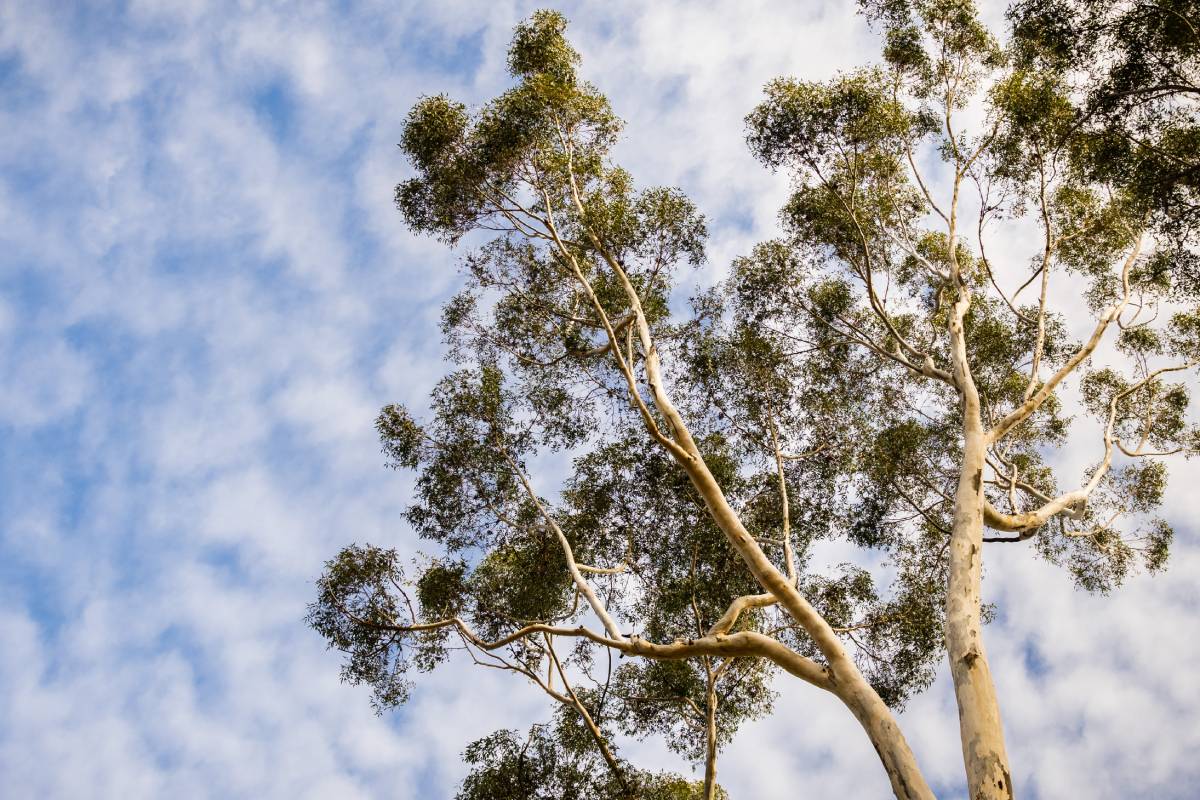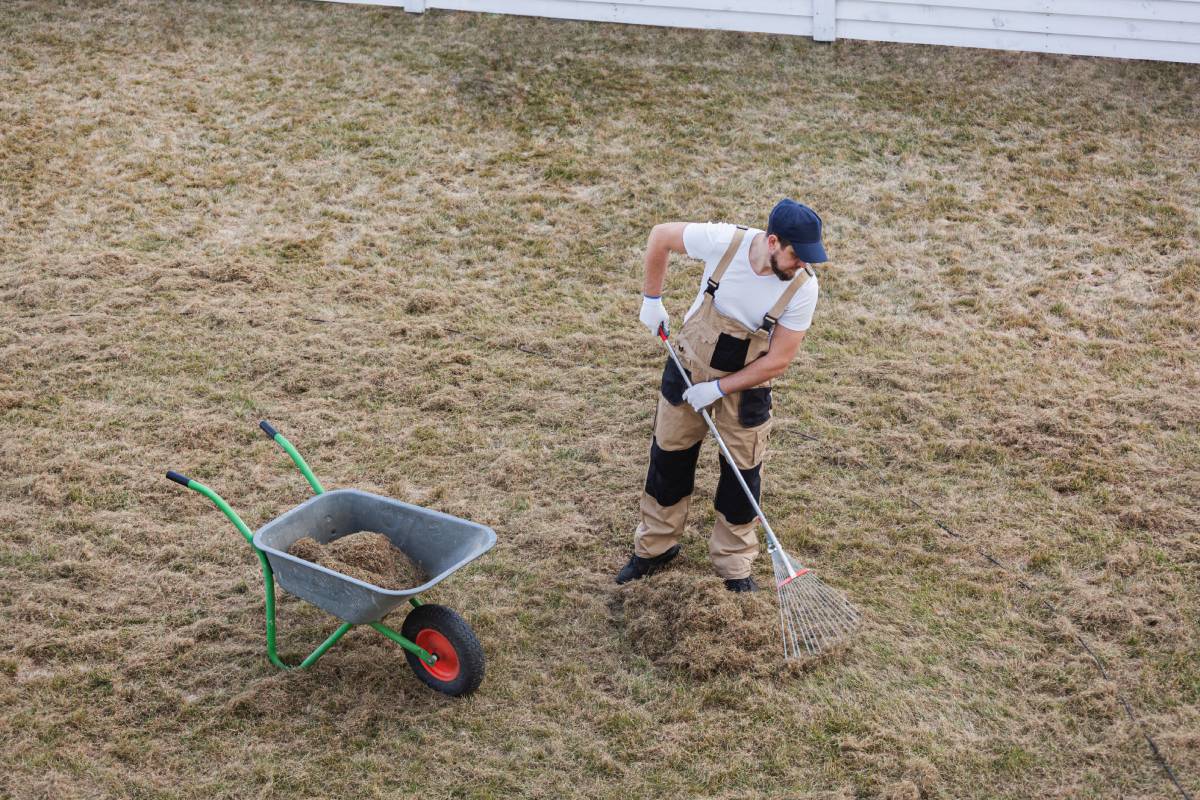
Gum trees, or eucalyptus trees, are a quintessential part of the Australian landscape. They provide shade, improve air quality, and are home to native wildlife.
However, there are times when removing a gum tree becomes necessary. Whether due to safety concerns, disease, or property maintenance, deciding to remove a gum tree is a significant step.
In this article, we’ll explore the factors to consider before removing a gum tree and guide safely removing an eucalyptus tree stump.
When Should You Remove a Gum Tree?
1. Health and Safety Concerns
Gum trees are known for their sturdy appearance, but they are not immune to issues like disease, decay, or structural instability. If a tree shows signs of disease, such as discoloured leaves, dead branches, or fungal growth, it might pose a risk to people and property. Fallen branches, often referred to as “widow-makers,” can cause severe damage or injury.
2. Proximity to Structures
Eucalyptus trees can grow to towering heights, with extensive root systems that can compromise nearby structures and cast a shadow on your solar panel. Roots might also invade plumbing systems, crack foundations, or lift pavements. If the tree is too close to your home, removing it might prevent costly repairs in the future.
3. Overcrowding and Space Management
Sometimes, gum trees grow in areas where they compete with other vegetation or limit usable space in your yard. Removing a tree can create more room for landscaping, gardens, or outdoor activities.
4. Fire Risk
In Australia, bushfires are a constant threat. Gum trees are highly flammable due to their oil-rich leaves. If your property is in a fire-prone area, reducing vegetation, including removing large gum trees, might be a necessary safety measure.
Factors to Consider Before Removing a Gum Tree
1. Legal Requirements
Many local councils in Australia have regulations around tree removal. You may need a permit, especially if the tree is a protected species. Check with your local council before proceeding.
2. Environmental Impact
Gum trees are an essential part of the ecosystem, providing habitats for birds, possums, and other wildlife. Before removing a tree, consider the potential impact on the local environment. You might also consider planting native species elsewhere to offset the loss.
3. Costs
Tree removal is not a DIY task for most homeowners. Hiring professional arborists can be expensive but ensures safety and compliance with local laws. Costs vary depending on the size of the tree, accessibility, and whether you need stump removal.
4. Alternatives to Removal
Sometimes, pruning or trimming the tree can resolve concerns without complete removal. Consult a tree care expert to explore all options.
How to Remove an Eucalyptus Tree Stump
After the tree has been cut down, the remaining stump can be an eyesore or even a hazard. Removing an eucalyptus tree stump is a multi-step process that requires the right tools, techniques, and patience.
1. Assessment and Preparation
Before starting the removal process, assess the stump’s size, location, and condition. Older or decayed stumps might be easier to remove, while healthy ones with deep roots require more effort.
Tools You May Need:
- Chainsaw
- Shovel
- Pickaxe
- Stump grinder
- Safety gear (gloves, goggles, boots)
2. Manual Stump Removal
If the stump is small or medium-sized, you might remove it manually using these steps:
- Dig Around the Stump: Use a shovel to dig a trench around the stump, exposing its roots.
- Cut the Roots: With a pickaxe or saw, cut through the exposed roots. Start with smaller roots and gradually work on the larger ones.
- Loosen the Stump: Wiggle the stump back and forth to loosen it. Continue cutting roots as needed.
- Pull Out the Stump: Once the stump is sufficiently loosened, pull it out using physical force or a vehicle with a winch for larger stumps.
3. Chemical Stump Removal
For those who prefer a less labour-intensive method, chemical stump removal is an option. This process involves:
- Drill Holes: Drill several deep holes into the stump.
- Apply Stump Remover: Pour a chemical stump remover (available at hardware stores) into the holes. These chemicals accelerate decomposition.
- Wait: Allow the chemicals to work over several weeks or months. The stump will gradually become soft and easier to break apart.
- Remove the Stump: Once decayed, use an axe or shovel to remove the remaining wood and roots.
4. Stump Grinding
For larger or stubborn stumps, hiring a professional stump grinding service is often the best solution. A stump grinder is a machine that grinds the stump into wood chips, eliminating it below ground level. This method is fast, effective, and minimizes damage to the surrounding area.
5. Burning the Stump (Where Permitted)
In some rural areas, controlled burning is allowed for stump removal. Ensure you have the necessary permits and follow fire safety guidelines. Burning involves:
- Drilling Holes: Drill holes into the stump to allow better airflow.
- Adding Accelerants: Use kerosene (never gasoline) to soak the stump.
- Igniting: Light the stump and monitor the fire until it burns down completely.
Note: Burning is not recommended in urban areas or fire-prone regions.
Post-Removal Considerations
After removing the stump, you may be left with a hole and scattered debris. Here’s how to restore the area:
- Fill the Hole: Use soil or a mixture of soil and compost to fill the hole left by the stump.
- Replant or Landscape: Consider planting a new tree, shrubs, or creating a garden bed in the cleared space.
- Dispose of Debris: Properly dispose of wood chips, roots, and other debris. Many councils offer green waste collection services.
Hiring Professionals
While DIY stump removal can save money, it is often labour-intensive and carries potential hazards. Attempting to remove a stump without the proper tools and expertise may result in injury or damage to your property.
Professional tree removal services, like AB Tree in Perth, have the specialized knowledge and equipment needed to complete the task efficiently and safely. They can also navigate the complexities of local regulations, ensuring compliance, particularly when it comes to protected trees. When hiring professionals, it’s essential to thoroughly evaluate your options.
Here are some tips to consider:
Get Multiple Quotes
Reach out to different companies, including AB Tree Services in Perth, to compare prices and the services they offer. This will help you find the best value for your needs.
Check Credentials
Ensure that any company you consider, including AB Tree Services, is licensed, insured, and certified by relevant arborist organizations. This adds a level of assurance regarding their professionalism and expertise.
Ask About Cleanup
Confirm whether debris removal is included in the service. Some companies may charge extra for cleanup, so it’s important to clarify this upfront to avoid any surprises.
By following these guidelines and considering reputable services like AB Tree in Perth, you can ensure a safer and more efficient stump removal process.
Final Thoughts
Deciding to remove a gum tree is not just a practical choice but an environmental one. Assess the necessity carefully, considering alternatives like pruning before opting for full removal. If you proceed, removing the stump ensures the area is safe, usable, and visually appealing.
For professional assistance, consult licensed arborists or tree care companies in your area. They can provide expert advice and ensure the process is smooth and compliant with local laws. Removing a gum tree or its stump might be challenging, but with the right approach, you can transform your space while maintaining respect for Australia’s natural heritage.












